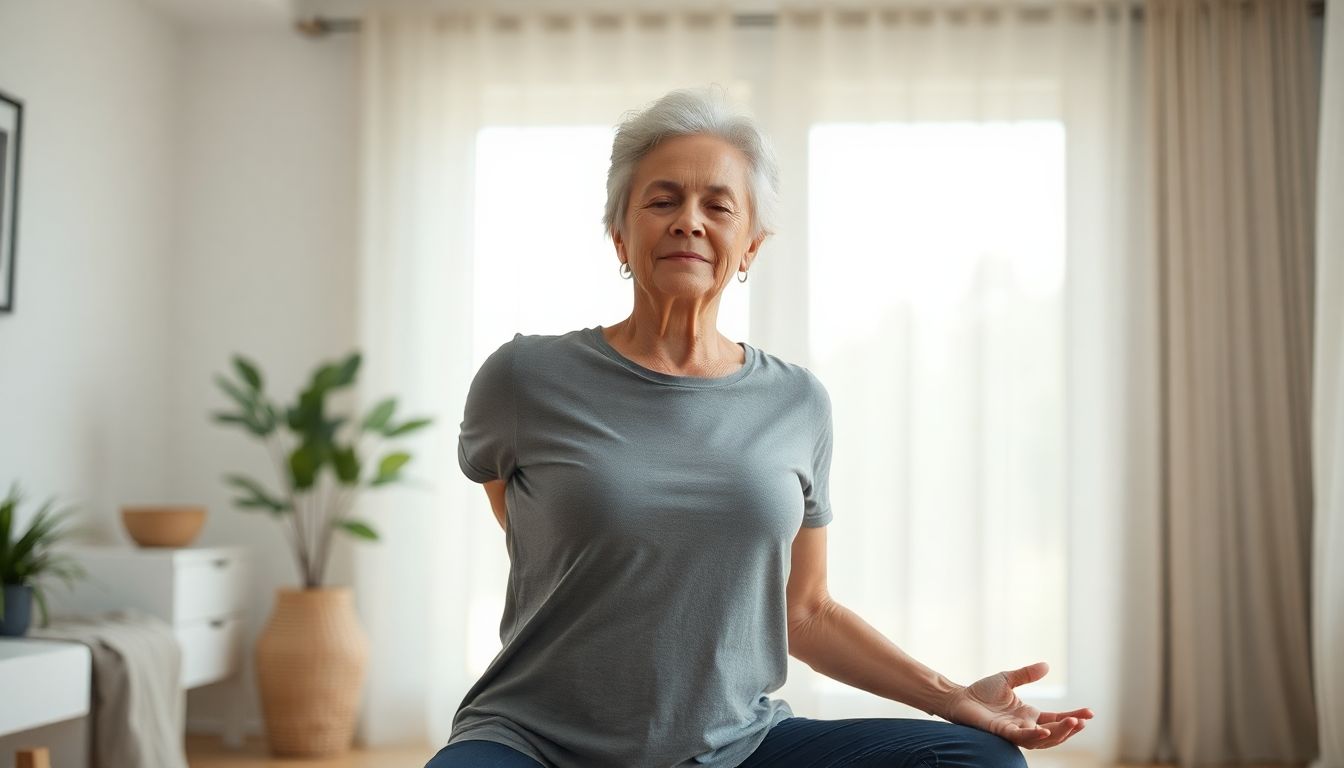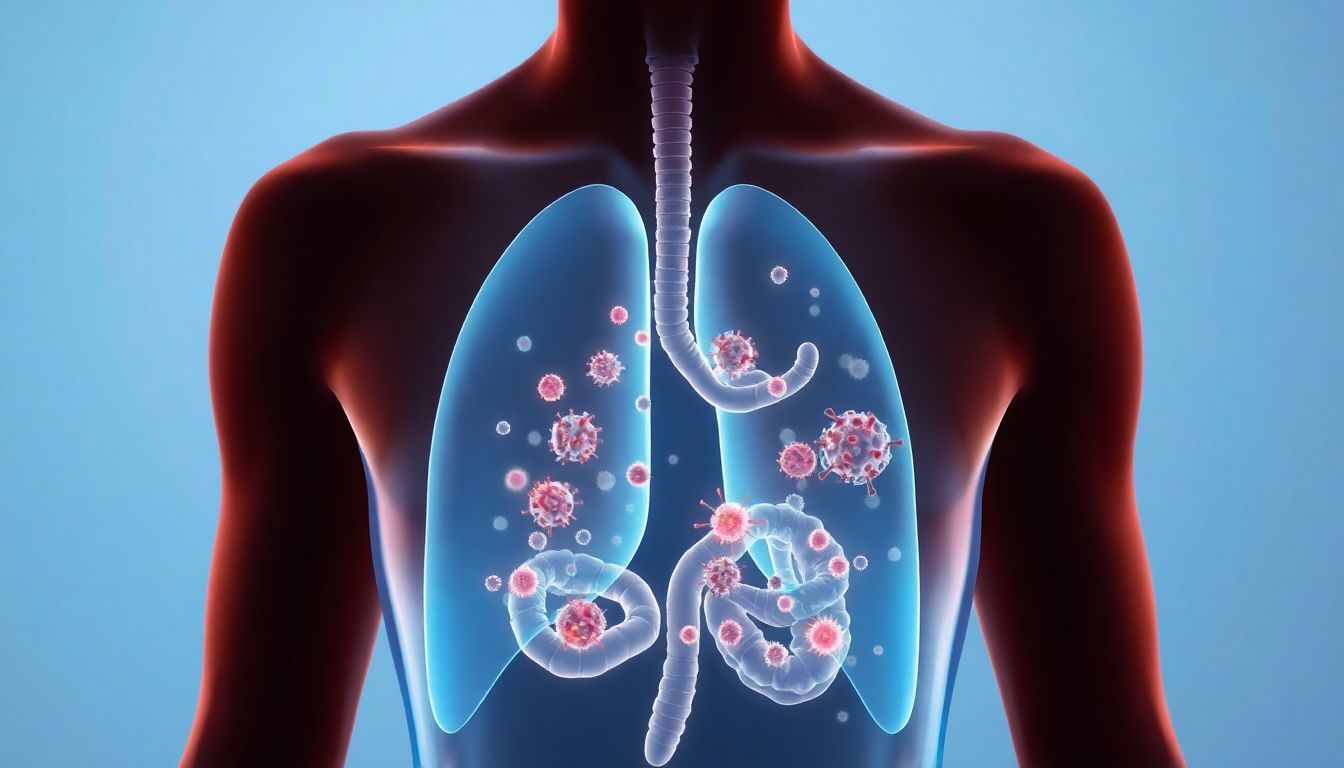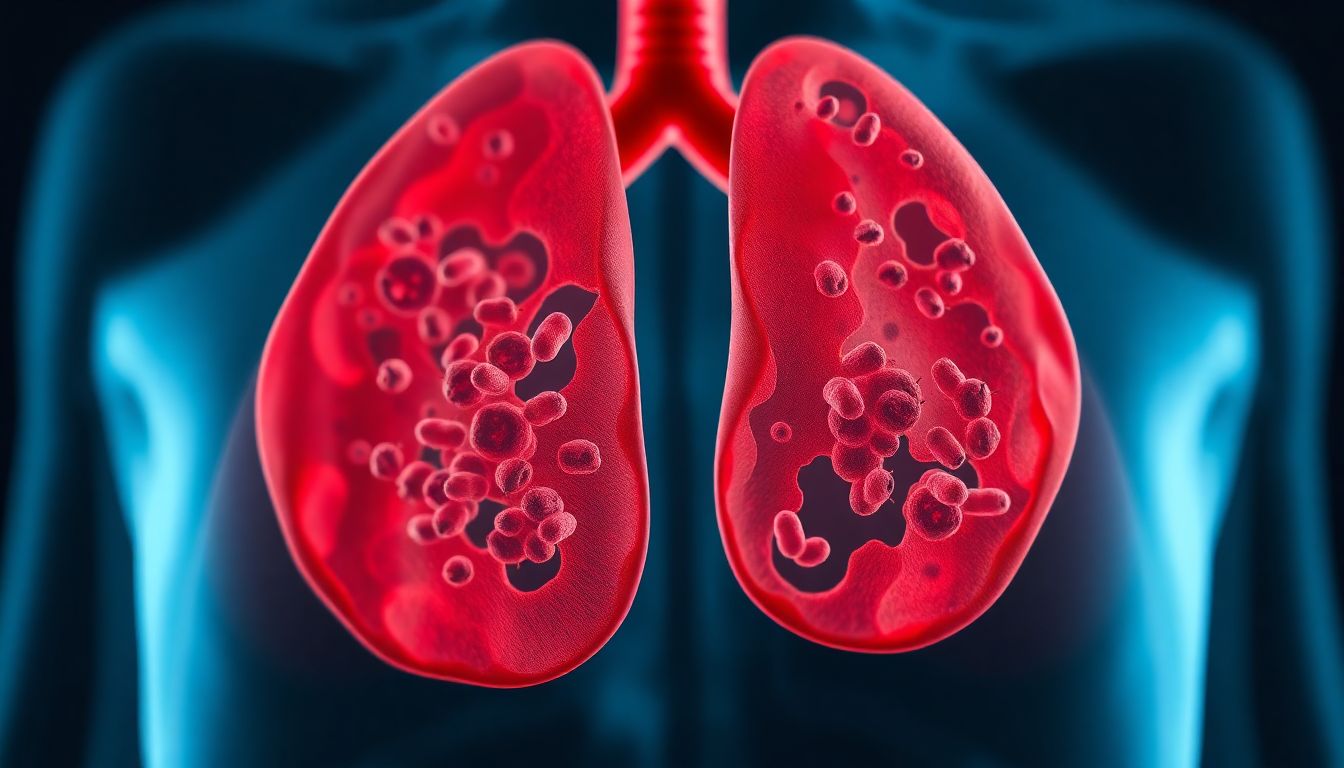Do you ever feel like your chest is too tight to take a full, satisfying breath? Like there’s an invisible band around your ribs restricting your breathing?
You’re not alone. Years of poor posture, stress, and sedentary habits can literally shrink your chest cavity, reducing the space your lungs have to expand. The result? Shallow breathing, reduced oxygen intake, and that constant feeling of not getting enough air.
But what if you could physically create more space for your lungs to work?
For those experiencing persistent breathing difficulties, understanding hidden signs of lung congestion can help address underlying issues that might be limiting your breathing capacity.
Certain yoga poses are specifically designed to expand your rib cage, stretch your respiratory muscles, and increase your lung capacity. A 2023 study in the International Journal of Yoga found that just 12 weeks of regular practice can increase lung capacity by up to 15% in healthy adults. To maximize these benefits, many practitioners combine yoga with targeted diaphragmatic breathing exercises that strengthen your core respiratory muscles.
Here are the 5 most effective yoga poses for opening your chest and helping you breathe deeper than you have in years.
1. Camel Pose (Ustrasana): The Ultimate Chest Opener
Why It Works: This powerful backbend reverses the forward-hunching posture that compresses your lungs. It stretches the entire front of your body, including the intercostal muscles between your ribs, creating immediate space for deeper breathing.
Step-by-Step:
- Kneel on the floor with knees hip-width apart
- Place hands on your lower back with fingers pointing down
- Inhale deeply and lift your chest toward the ceiling
- Slowly arch backward, reaching for your heels if possible
- Keep your neck long or gently let your head drop back
- Hold for 30 seconds, breathing deeply into your chest
Beginner Tip: Place a yoga block between your feet if you can’t reach your heels.
The Science: Research shows backbends like Camel Pose can increase thoracic expansion by up to 25%, directly improving lung capacity.
2. Bridge Pose (Setu Bandhasana): The Gentle Opener
Why It Works: Bridge pose is a more accessible backbend that still provides excellent chest opening while being gentler on the spine. It’s perfect for beginners or those with back concerns.
Step-by-Step:
- Lie on your back with knees bent, feet hip-width apart
- Place arms alongside your body, palms facing down
- Inhale and lift your hips toward the ceiling
- Roll your shoulders underneath you, clasping hands if possible
- Press firmly through your feet to lift your chest higher
- Hold for 30-60 seconds, breathing deeply
Beginner Tip: Keep your hands on your lower back for support instead of clasping them.
Perfect For: Combining with diaphragmatic breathing practice while in the pose to enhance lung expansion.
3. Fish Pose (Matsyasana): The Lung Expander
Why It Works: Named after the fish (which needs well-developed respiratory systems), this pose directly counteracts the collapsed chest posture from sitting and computer work.
Step-by-Step:
- Lie on your back with legs extended
- Slide your hands underneath your hips, palms down
- Press into your elbows to lift your chest upward
- Gently arch your upper back and let your head tilt back
- Keep most of your weight on your elbows, not your head
- Hold for 15-30 seconds, taking deep chest-expanding breaths
Safety Note: Avoid this pose if you have neck issues, or keep your head on the floor.
The Benefit: Creates space between your ribs, allowing for fuller lung expansion with each breath.
This pose works particularly well after using steam inhalation therapy to clear any congestion before your practice.
4. Cobra Pose (Bhujangasana): The Gentle Backbend
Why It Works: Cobra pose specifically targets the upper back and chest, areas that become particularly tight from poor posture. It’s excellent for improving the flexibility needed for deep inhalation.
Step-by-Step:
- Lie on your stomach with hands under your shoulders
- Keep elbows close to your body and legs extended
- Inhale and gently lift your chest off the floor
- Use your back muscles rather than pushing hard with your arms
- Keep your hips on the floor and shoulders relaxed
- Hold for 15-30 seconds with steady breathing
Progression: For deeper opening, try Upward-Facing Dog by lifting your thighs off the floor.
5. Supported Chest Opener: The Restorative Option
Why It Works: This gentle pose requires no strength or flexibility, making it perfect for everyone. It uses gravity to gently open your chest and release tension in your breathing muscles.
Step-by-Step:
- Place a yoga block or firm pillow on the floor
- Sit in front of it and slowly lie back so the block supports your upper back
- Allow your arms to fall open to the sides, palms up
- Let your head rest comfortably on the floor
- Close your eyes and breathe deeply for 1-2 minutes
- Focus on feeling your chest expand with each inhalation
Perfect For: Using when you feel anxious or short of breath, as it combines chest opening with relaxation.
This pose can also be combined with pursed-lip breathing techniques for immediate relief from breathlessness.
Creating Your 5-Minute Daily Practice
You don’t need hours to benefit. Try this quick sequence:
Morning Energy Boost:
- Supported Chest Opener (1 minute)
- Cobra Pose (30 seconds)
- Bridge Pose (1 minute)
- Deep breathing in each pose
Enhance your routine: Many yoga practitioners find that adding the 7-second morning breathing habit before their practice prepares their respiratory system for deeper work.
Evening Relaxation:
- Fish Pose (30 seconds)
- Bridge Pose (1 minute)
- Supported Chest Opener (2 minutes)
Important Safety Tips
- Listen to your body – never push into pain
- Avoid deep backbends if you have spinal issues
- Consult your doctor if you have serious health conditions
- Breathe smoothly – never hold your breath
- Use props (blocks, pillows) to make poses accessible
Medical Note: If you experience persistent breathing issues despite yoga practice, consider taking our 2-minute lung health quiz for personalized insights.
Why Combine Yoga with Breathing Exercises?
While these poses create physical space for better breathing, techniques like pursed-lip breathing help you use that new capacity efficiently. For comprehensive respiratory support between yoga sessions, many practitioners use Breathe Drops to maintain airway comfort. Together, they’re a powerful combination for respiratory health.
Ready to take the next step? For a complete approach to respiratory wellness, explore our guide to natural lung health restoration that combines yoga, breathing techniques, and lifestyle strategies.
The Bottom Line: Your Chest Was Made to Expand
Tight chest muscles and restricted rib movement aren’t permanent conditions. These five poses offer a natural way to reverse years of compression and literally create more room for your lungs to work.
Start with just one pose today. Your breathing doesn’t have to stay shallow and restricted. With consistent practice, you can rediscover the deep, satisfying breaths your body was designed to take.
Yoga for Lung Capacity: Your Questions Answered
1. How quickly will I notice improvements in my breathing?
Many people feel immediate relief from chest tightness after their first session. Noticeable improvements in lung capacity and breathing ease typically appear within 2-4 weeks of consistent practice (3-5 times per week).
2. I’m not flexible – can I still do these poses?
Absolutely! Yoga is about meeting your body where it is. Use props like blocks, pillows, and blankets to make poses accessible. The Supported Chest Opener is perfect for beginners and requires no flexibility.
3. Can yoga help with COPD or asthma?
Yes, multiple studies show yoga can improve quality of life and lung function in both COPD and asthma patients. However, always consult your doctor before starting, and avoid poses that trigger breathlessness. These gentle chest openers are generally well-tolerated.
4. What’s the best time of day to practice?
Morning practice can help open your chest and improve breathing throughout the day. Evening practice can release tension accumulated from daily activities. Many people benefit from both, even if just for 5 minutes each.
5. How is this different from regular stretching?
Yoga combines physical postures with conscious breathing, making it particularly effective for respiratory health. The focus on breath awareness helps retrain your breathing patterns while the poses create physical space.
6. I have back problems – are these poses safe?
The Supported Chest Opener and gentle Cobra Pose are generally safe for most back issues. Avoid deep backbends like Camel Pose if you have serious spinal problems. Always consult your physical therapist or doctor for personalized advice.
7. Can I do these poses if I’m overweight or older?
Yes, and they’re particularly beneficial! Use props generously and focus on the gentler poses like Supported Chest Opener and Bridge Pose. Listen to your body and move slowly. Yoga is adaptable for every body type and age.
8. How long should I hold each pose?
Start with 15-30 seconds per pose and gradually work up to 1-2 minutes as you build strength and flexibility. The key is holding long enough to feel a gentle opening but not so long that you strain.
9. Should I practice on an empty stomach?
It’s generally more comfortable to practice 1-2 hours after eating. However, a 5-minute gentle sequence can be done anytime. Listen to your body – the benefits of consistent practice outweigh perfect timing.
10. Can I combine this with other breathing exercises?
Absolutely – and we recommend it! Practice diaphragmatic breathing while in these poses to maximize benefits. The poses create space, and the breathing exercises teach you how to use that new capacity effectively.
📚 Build Your Complete Breathing Practice
Diaphragmatic Breathing Guide
Master the foundational breathing technique that strengthens your core respiratory muscles and complements your yoga practice.
Build Core Breathing Strength →Emergency Breathing Technique
Learn pursed-lip breathing to stop shortness of breath instantly—perfect for moments between yoga sessions.
Master Emergency Relief →Natural Lung Detox Methods
Discover 7 science-backed techniques to cleanse your respiratory system and enhance your yoga breathing benefits.
Cleanse Your Respiratory System →Lung-Healthy Nutrition
Support your yoga practice with anti-inflammatory foods that reduce respiratory inflammation and improve breathing.
Optimize Your Diet →Instant Mucus Relief
Use steam inhalation with essential oils to clear congestion before your yoga practice for deeper, easier breathing.
Prepare for Deep Breathing →7-Second Morning Habit
Start your day with a quick breathing technique that complements your yoga routine and maintains lung health.
Establish Daily Routine →











